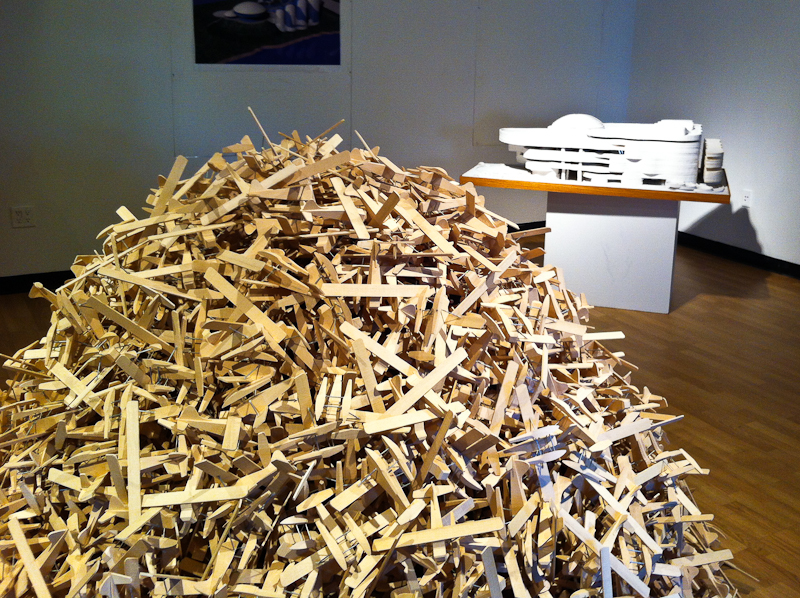On National Aboriginal Day, June 21, Gallery 101 opened the exhibition God’s Country/ Gzhe-minidoo Ki in association with the first annual Asinabka Film and Media Arts Festival in Ottawa.
Co-curated by Carleton graduate Howard Adler and undergraduate student Christopher Wong, the exhibition featured works by contemporary Aboriginal artists Douglas Cardinal, Frank Shebageget, Scott Benesiinaabandan, and Tannis Nielson.
The show displays a various array of art media, from Douglas Cardinal’s proposed blueprint for the Asinabka National Indigenous Centre to Tannis Nielsen’s experimental video “Not forgotten.”
The exhibition “showcases Indigenous artists that are dealing with how they approach legacies of colonialism,” Adler said.
“The works in this show we have here all have some sort of connection to land or memory.”
Frank Shebageget’s installation piece “Lodge”—which appears to be a simple re-creation of a beaver dam—actively critiques these legacies through the clever appropriation of the Beaver floatplane. As one approaches the piece, they are struck with the realization that each piece of wood used to construct the dam is carved in the form of the plane.
Wong explained that Shebageget handcrafted all 1672 pieces.
“For him, these planes were like an army or a swarm of bees that came to colonize northern Ontario and so when he put this together he wanted to sort of de-colonize that colonization process by making it into a beaver lodge.”
“This is not just the aftermath. It ‘s picking up the pieces and trying to move forward,” Wong said.
“This is a beaver lodge, but it’s not made up of twigs per se. It’s made of airplanes, it’s hand-crafted using modern technological methods.”
Adler said the theme of decolonization was a prominent one between the works as he described their link as “coming to grips with colonial legacies and decolonizing through art.”
Architect and activist Douglas Cardinal is another example of an artist dealing with the legacy of colonialism through the medium of architecture.
Cardinal spoke at the opening about the proposed plan for the National Indigenous Centre on Victoria Island in Ottawa which he said “was and is the spiritual centre of all Anishinaabe people.”
Cardinal said he envisions a circular building which serves as “a gathering space where people could come and discuss in the circle which would be a forum, a gathering space for people to talk.”
The visionary behind this concept was the Elder William Commanda, to which Cardinal attributes his inspiration.
“He really believed that we should develop a circle where all nations and all people come together. There’s only one race and that’s the human race. When we speak from our hearts, we are all the same.”
The project has yet to be realized due to a lack of funding and current government support, Cardinal said.
However, he does not criticize the government but recognizes that the initiative has to come from the people.
“The soft power of love is much more powerful than the hard power of force” Cardinal explained, in reference to a belief of the Elders.
The exhibition runs until July 28. Adler expressed a desire for visitors “to think about colonialism and the fact that it hasn’t ended. Aboriginal people in Canada are still coming to grips with these things.”
“I don’t think non-Aboriginal people, regular Canadians I guess, should be off the hook by not thinking about colonial legacies because they are implicated in that history as well.”






